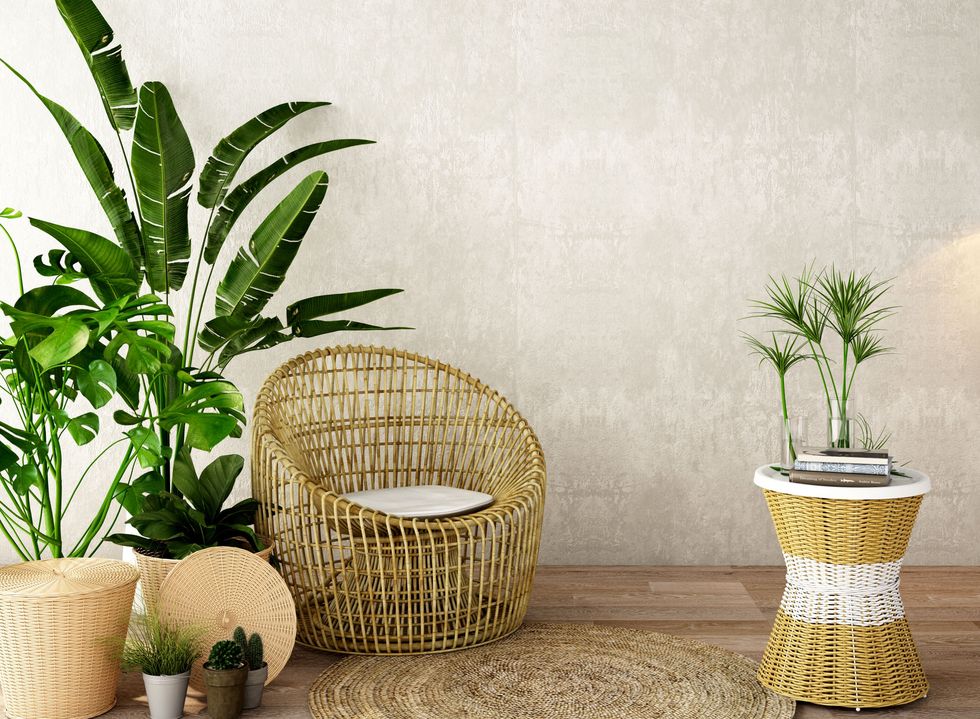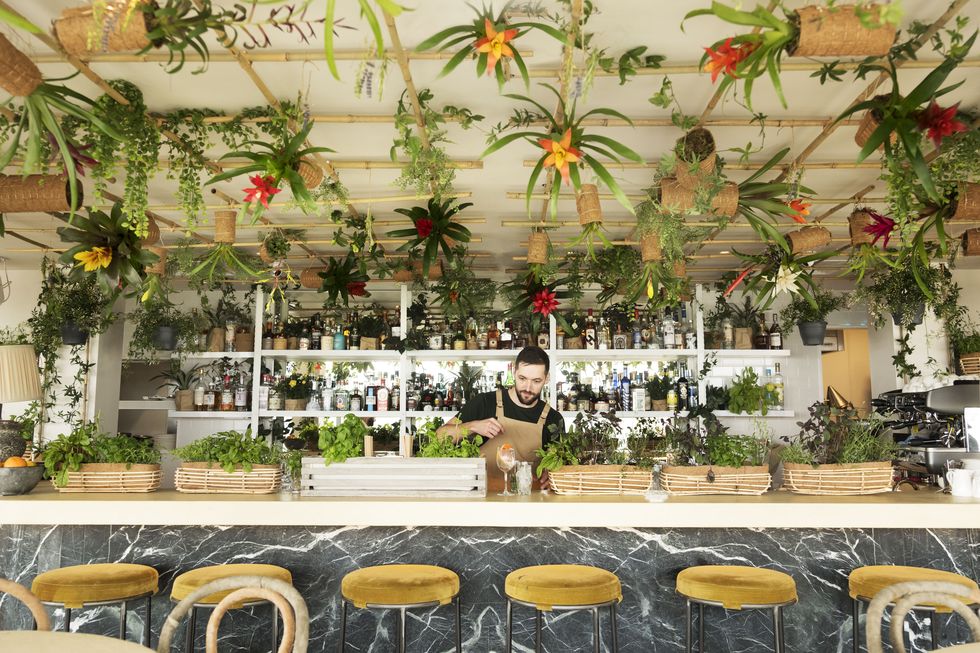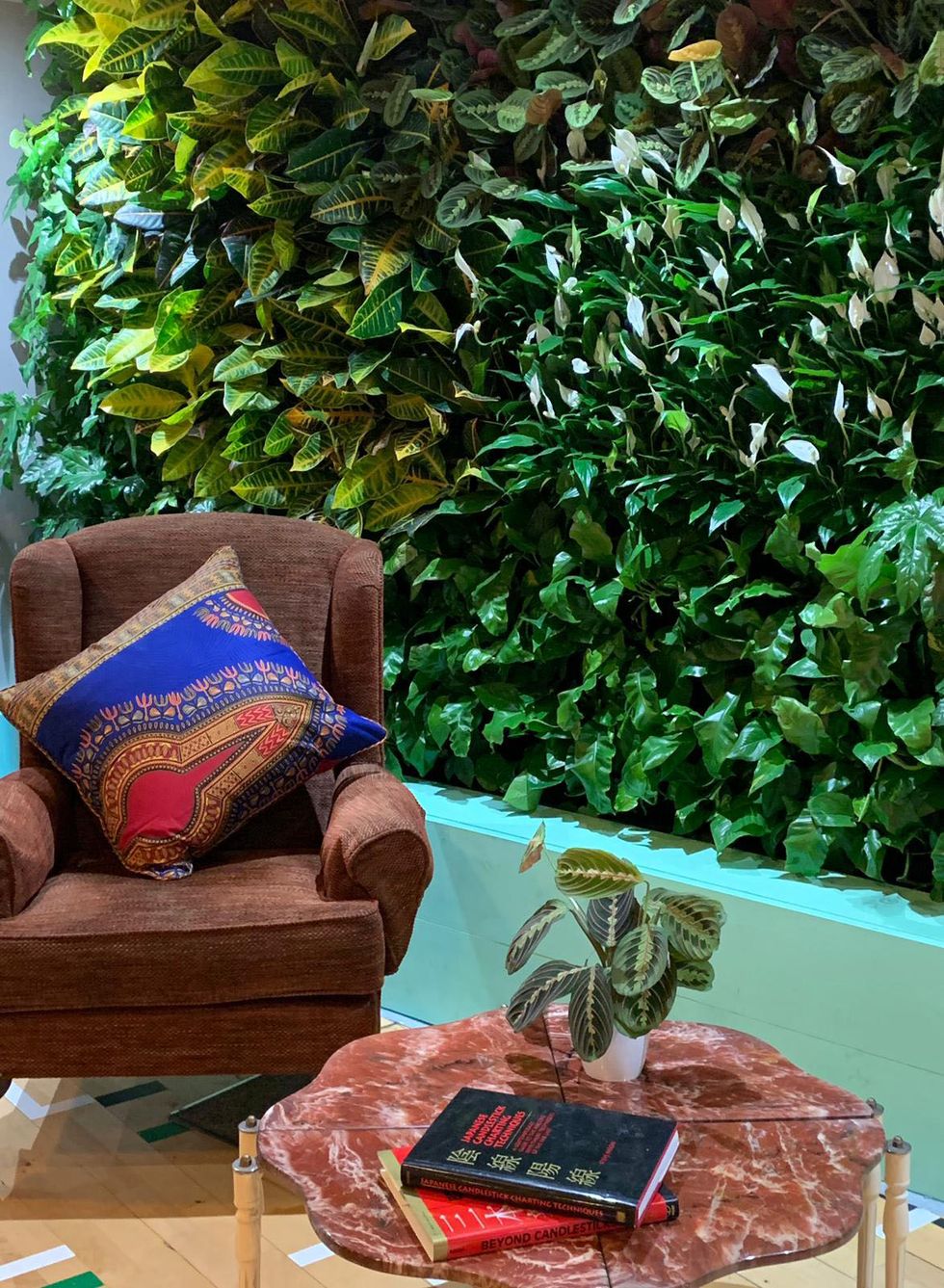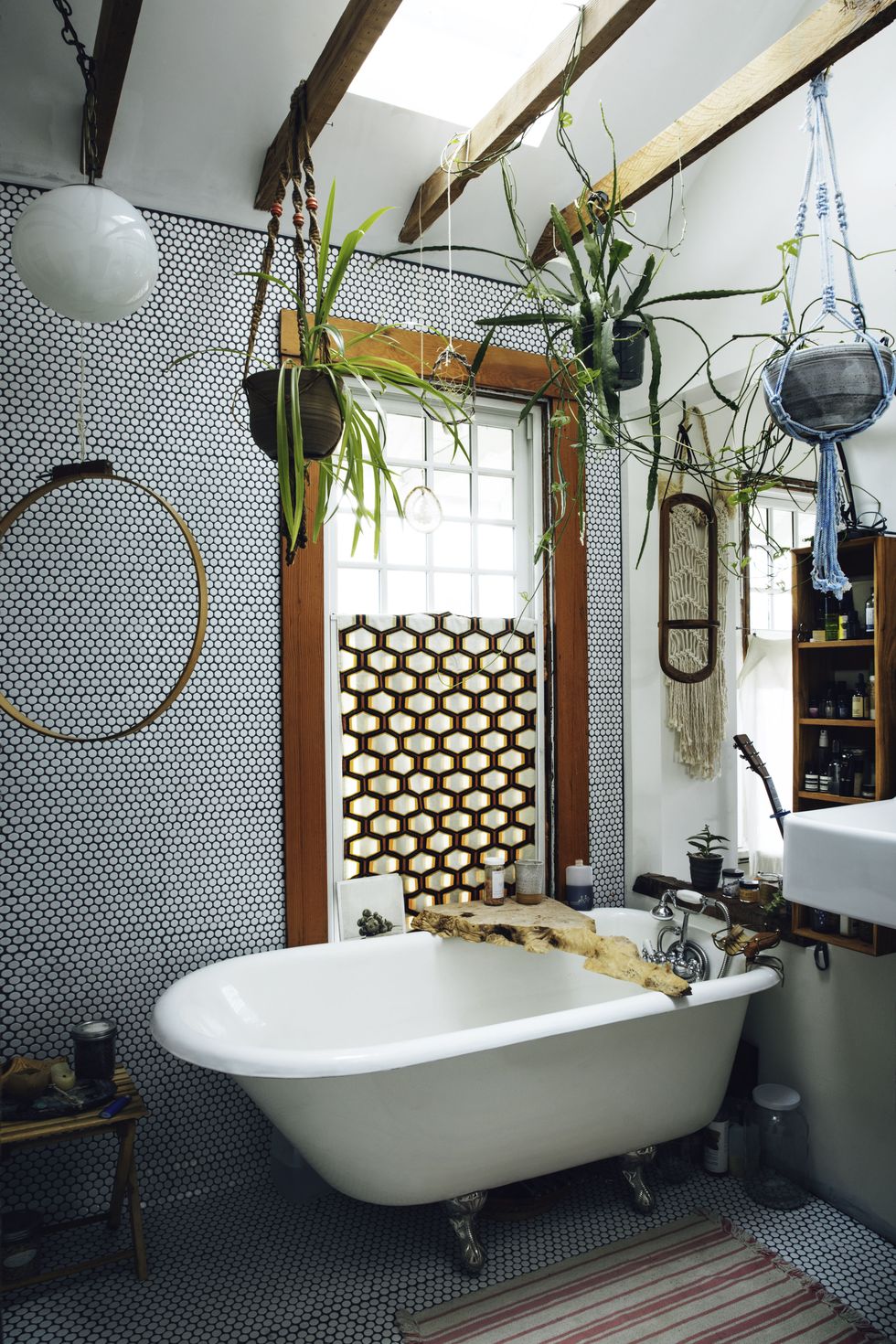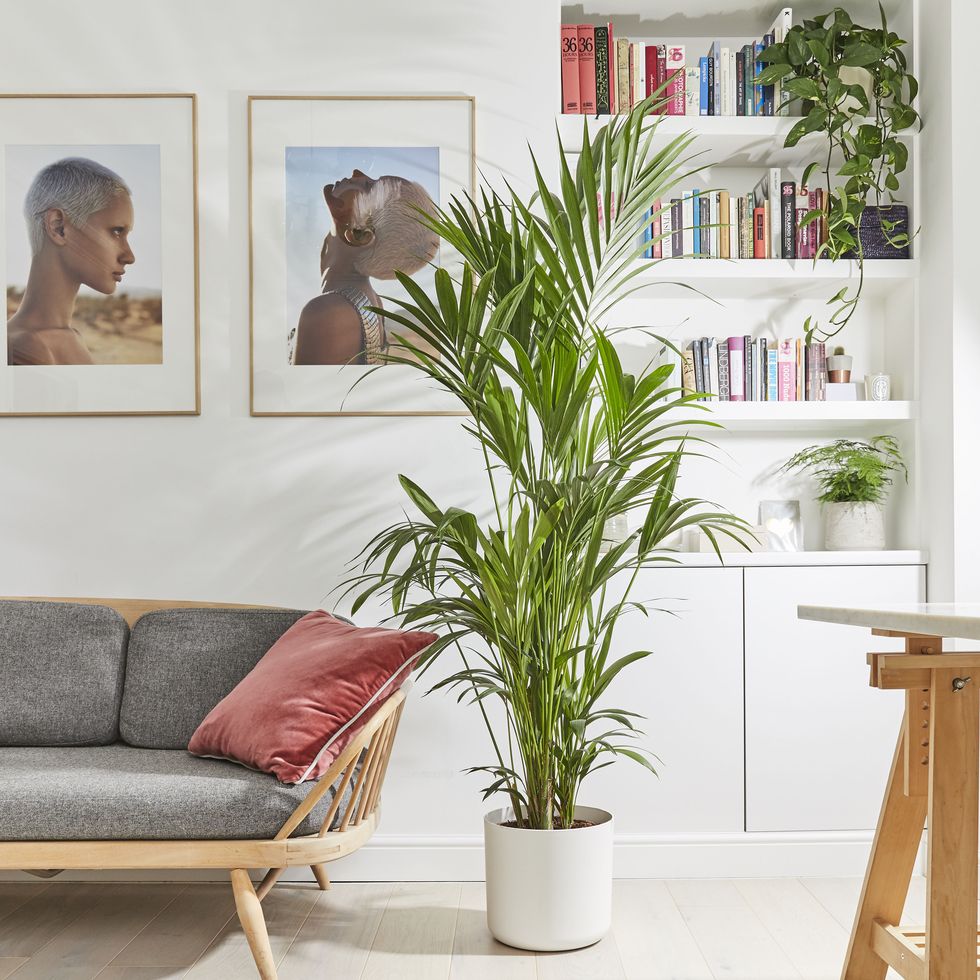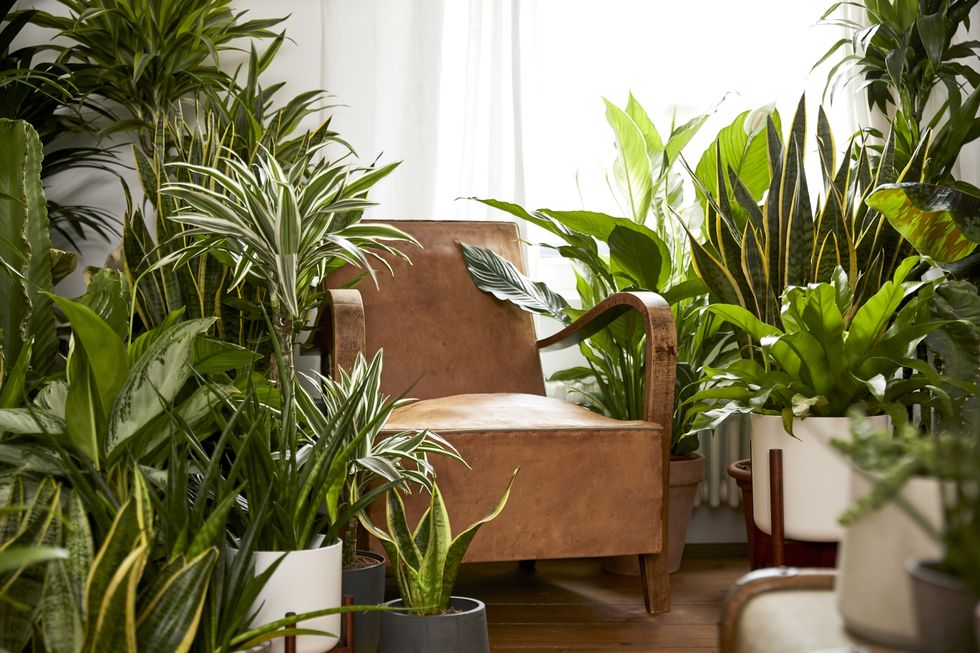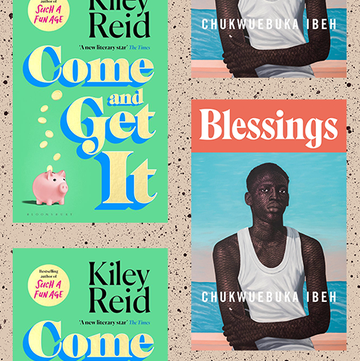For me, it began with a Money Tree and a Kentia Palm named Theresa and Jeremy in summer 2018. Despite being ill-suited to his new conditions (too much sunlight and periods of under and overwatering), Jeremy remained steadfast and refused to give up the ghost. Theresa’s development was slow, and – after a series of unfortunate, tragic domestic events (accidental waterboarding and eventual decapitation) – a replacement was necessary. Pleasingly, Theresa the second is going from strength to strength.
Following the arduous journey of Jeremy and Theresa, I now have 12 house plants that decorate my kitchen, living room and bedroom. That doesn’t include the dried bunches of eucalyptus that are draped over my wardrobe, nor the fresh flowers I currently have in five small vases around my South London flat. My flatmate tells me our living space looks like a cross between Elton John’s house and Kew Gardens, a comment I have interpreted as a compliment. I have braved Colombia Road Flower Market in hail stones because I thought that I’d be in a strong position for a better plant-based bargain (I was right), and I cannot resist asking for botanical additions when it comes to birthdays and Christmases. I am a plant addict.
My newfound obsession with botanicals is far from isolated. Since 2000, exports from the Netherlands (the world’s biggest producer of plant life) have increased from $6 billion to $9 billion in 2016. According to The Flowers & Plants Association, the UK’s flower and indoor plant market is worth £2.2 billion. In the US, millennials account for five million of the six million people who had taken up gardening. Patch, which set up shop in 2015, reports a 10 per cent growth in 25 to 34-year-olds buying plants and counts its core customer as those in their 20s and 30s.
“They bring character and colour to all of my rooms,” says Sam Green, a 31-year-old graphic designer, who has filled her London flat with 11 plants. “They make me feel relaxed and happy, which I admit sounds cheesy, but I find myself staring at them and admiring how they have grown. It’s a mini mind break when I need to forget the commute I've just had or the amount of washing up I need to tackle.”
In November last year, the Bourne & Hollingsworth group opened The Garden Room, on the 10th floor of Assembly Hotel on London’s Charing Cross Road - a bright airy space brimming with trees and foliage. A window box meadow surrounds the room, while creepers and herbs adorn the tables. Two weeks ago, the first members-only club and co-working space dedicated to plants was opened. Arboretum describes itself as “London’s first and only indoor oasis”, characterised by trees, plants and verdant greenery in many forms. Already the club has proven popular and founder, Ronald Ndoro, hopes to close membership applications soon.
“Greeneries are believed to increase productivity and wellness, and nurture better relationships, while enhancing greater problem solving,” Ndoro told us. “Also, greeneries provide cleaner air - which is of course essential to all life. A substantial evidence base already exists that demonstrates how exposure to green space is very good for us. Living and working in a greener environment is associated with better mental health and lower all-cause mortality, from conditions such as circulatory disease and asthma, while cutting obesity levels through encouraging physical activity. Healthier workers make more productive workers.”
Our raised awareness of body and mind has contributed to the popularity of indoor botanicals. The science goes that plants are adept at absorbing gases through their leaves and roots, thus cleaning the air for us. But the appeal goes beyond that - we also know that being outdoors, or at least around greenery, is good for us mentally. The proven psychological benefits include lower stress levels, increased worker productivity and an improved mood, while physical advantages span reduced blood pressure, improved breathing and reduced headaches and fatigue. In an increasingly busy world where we stare at tech devices for lengths of time, caring for plants is respite.
“The more time we've spent on screens, the more we’ve craved to do things with our hands and slow down a bit,” says Alice Vincent, who has written a book on stress-free gardening titled How To Grow Stuff. She is currently penning another about her horticulture journey, Root-Bound, out in 2020. “Plants offer exactly that - you can’t hurry them along; there’s no instant gratification and they require you to get a bit messy. There’s a kind of therapy to be found in dealing with soil and growing things.”
“While there has been a big focus on what we are putting into our bodies, there is now an increasing number of people considering what they are putting in their homes to make themselves feel better,” says Patch founder Freddie Blackett. “There’s an abundance of studies which point out the links between plants and feeling calmer, happier and more at ease. Plants are an instant fix for a more aesthetically pleasing home, but we constantly hear from new ‘plant parents’ saying how tending to their new bit of botany helps clear their head.”
Beth Chapman founded Leaf Envy, a digital company dedicated to ‘plant parenthood’, after moving to LA and choosing botanics as her key interior investment. She eventually returned to the UK to launch her business and sold out of all plants and pots during her first week of pre-orders. She also sells greenery from her barge on Regent’s Canal where she’s able to talk to customers about their plant problems. In August, she will launch a WhatsApp notification platform to help the green-fingered care for their plant once they’ve received it.
“Plant parenthood is a cathartic release from our always-on, tech-first and urban society,” says Chapman. “It’s a form of escapism from the modern world, and gives us that precious time we need to reconnect with nature.”
While she agrees with the health benefits that plants offer, Chapman says that taking an interest in botanics isn’t news. “I don’t think it actually ever lost popularity,” she said. “My mum still talks about the cheese plant she had back in the '70s with fondness. I think it’s just that social media has meant more people are posting about plants and sharing their journey.”
Alice Vincent points out that we’ve been nurturing houseplants for centuries. “Victorian teenage girls were fascinated by ferns, for instance,” she says, referring to Victorian women using ferns as a way to express passion and desire (ferns were thought to look like female nether regions). “Humans instinctively react to green and living things. Much as people will jest about ‘plant babies’, I think most realise they are not the same as rearing a family. What I would say, though, is that houseplants are a great way of sprucing up a drab rented home; they offer a sense of permanence when so much in our generation’s lives are uncertain.”
Like so many modern trends, whether lifestyle or fashion, social media has played a role in the horticulture rise. Plantfluencers, the stars of the botany genre, have given visual inspiration for wannabe indoor gardeners. Summer Rayne Oaks, who has filled her Brooklyn home with 700 plants spanning 400 species, runs @homesteadbrooklyn with a following of over 103,000. Vincent’s account, @noughticulture, currently has 18,000 followers keen for updates on the 60-odd plants she keeps in her home and on her small London balcony.
“It’s given plants an aspirational platform that didn’t really exist for our generation before,” she explains. “There have always been beautiful books full of plants, but a non-plant-loving person is unlikely to have gone and read one. Following a plant-based Instagram account can give beginners and people new to horticulture dollops of inspiration and advice in a really accessible way. It’s democratised the scene massively.”
A lot has been made about whether or not millennials are buying plants because they can’t afford their own homes. While many can’t afford to climb the first rung on the property ladder, they can stretch to invest in houseplants to personalise their home. It’s also no surprise that plants are most popular in urban spaces that lack natural greenery.
“My flat previously felt bare and dull and I was unsure how I could change it,” says plant owner Sam Green. “I was unable to paint the walls to reflect my personality, but by adding plants my living space was transformed to reflect my style and character. Every plant I own has been chosen with as much consideration as the larger items of furniture I have.”
“Renting can be a challenge when it comes to making the place ‘your own,’” says Patch’s Blackett. “In lieu of being able to make significant changes, or in some cases even put pictures up, having a few statement plants dotted around certainly helps. I don’t think there’s a direct correlation between those not being able to buy a property and the rise in plant sales, but I can fully appreciate how important it is to make a rental property feel like it is yours.”
Plants provide a sanctuary for those who want to bring the outside in, and a way of bringing life and personality to our homes, while benefitting our physical and mental health. It seems we shouldn’t underestimate the power of the plant.
"It’s a rewarding feeling when you see your plants grow and start sprouting new babies,” says Chapman. “They look good and it’s therapeutic, fun and you know what you’re doing is good for the environment - so it’s a win, win scenario.”


